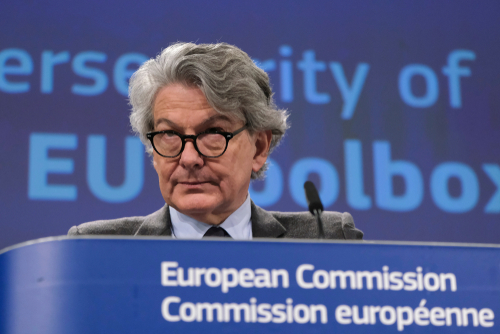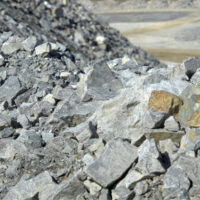Belgium, (Brussels Morning) Commissioner for Internal Market Thierry Breton meets today the CEOs of twenty European electrolyser manufacturers in Brussels, a sector in which Europe benefits from a technological leadership. The Commissioner’s visit is being organised in the framework of the European Clean Hydrogen Alliance and discussions are expected to turn around how to ramp up Europe’s electrolysers capacity, which are used to produce clean hydrogen.
The EU is hopeful that a boost in hydrogen production will help the bloc achieve its environmental goals while at the same time strengthen Europe’s independence from Russia’s fossil fuels.
According to Bloomberg, the Belgian manufacturer John Cockerimm Group (JCG) is currently the global market leader in electrolysers, with 33% of global sales in 2021. Among its competitors, only Norway’s Nel has unveiled a larger expansion plan, to build 10GW of capacity by 2025.
Energy dependence
In 2021, the EU imported more than 40% of its total gas consumption, 27% of oil imports and 46% of coal imports from Russia. Energy represented 62% of EU total imports from Russia, and cost €99 billion.
Although it represents a significant drop in comparison with 2011, when energy represented almost 77% of EU imports from Russia (equivalent to €148 billion), the EU is taking further measures to cut its dependence on Russian energy imports.
Recently, the Commission announced its REPowerEU Communication, in which the EU executive doubled its target with a view to have in place 10 million tons of domestically-produced renewable hydrogen in the EU by 2030.
The plan doubles the previous target of 40 GW hydrogen electrolysers by 2030 to now reach 75 GW by 2030.
Such new target will require additional electrolyser capacities and the mobilisation of the EU’s industrial policy toolkit.
REPowerEU
Overall, the key elements in the REPowerEU are diversifying supplies, reducing demand and ramping up the production of green energy in the EU.
In 2021, 43.5% of the EU’s natural gas imports came from Russia, but there were also significant volumes that came from Norway (23.6%), Algeria (12.6%) and the US (6.6%).
Most of these imports came through pipelines, but a growing share has come in liquid form, notably from the US, whose LNG exports to the EU have substantially increased since its first shipment in April 2016.
Apart from trying to break from the Russian energy dependency, today’s event is also part of the Commission’s work to achieve the objectives set out in a range of legislative proposals from the EU executive to deliver the European Green Deal and the EU hydrogen strategy.




